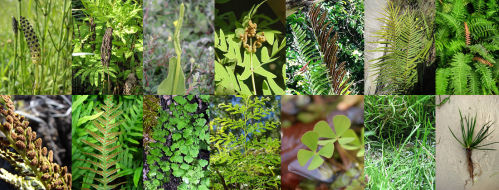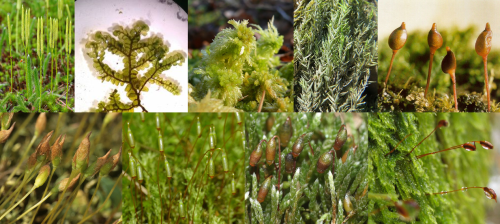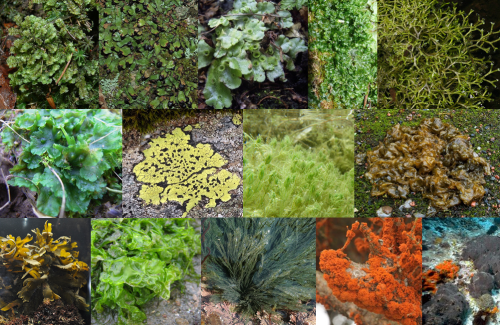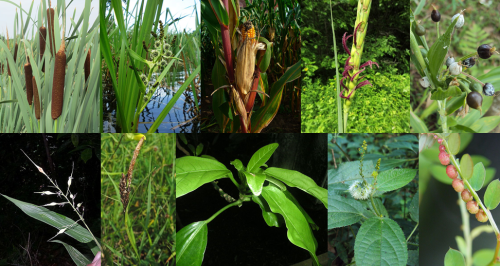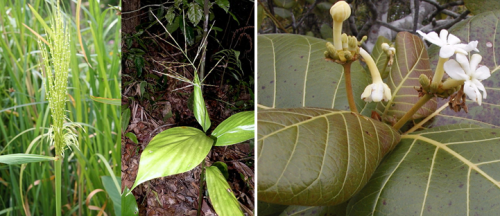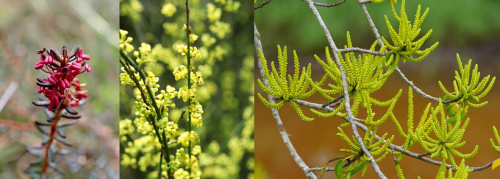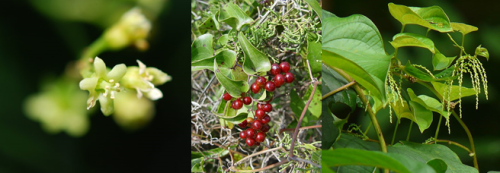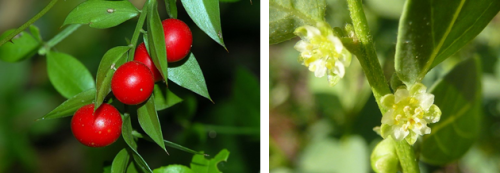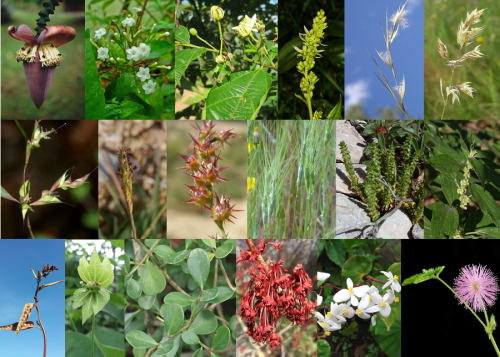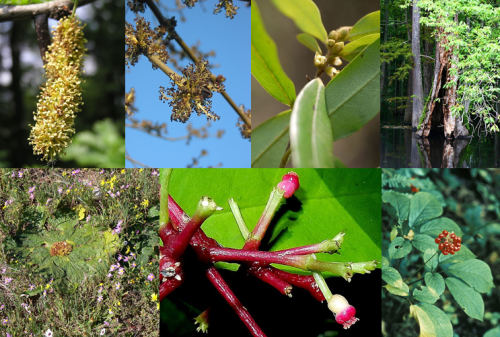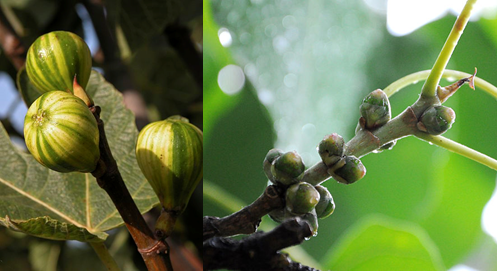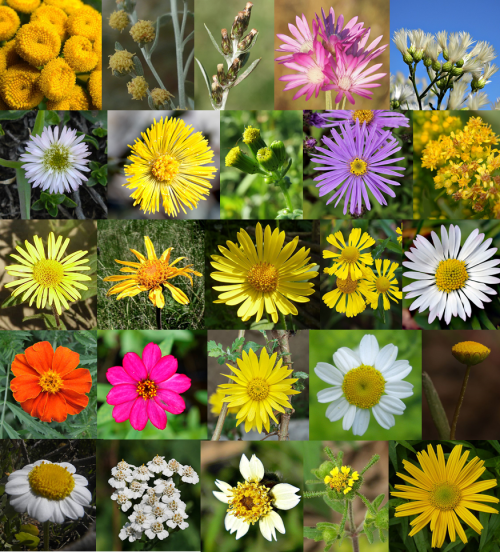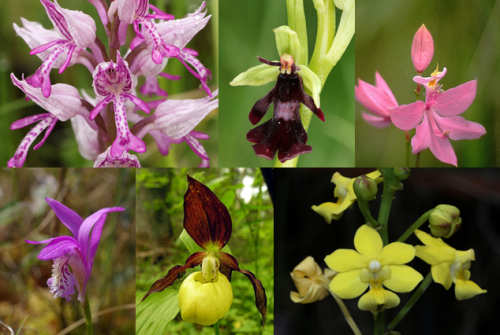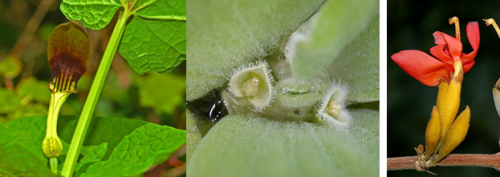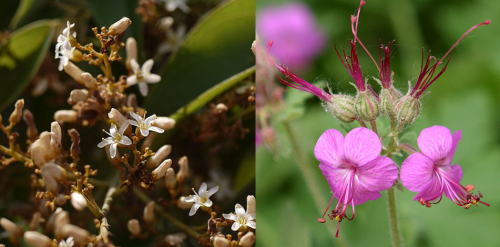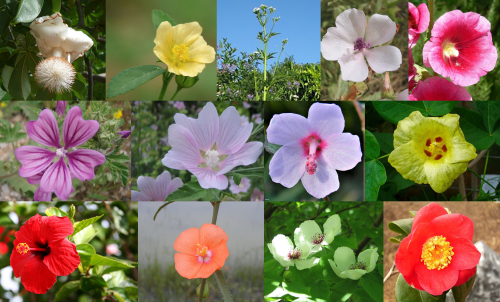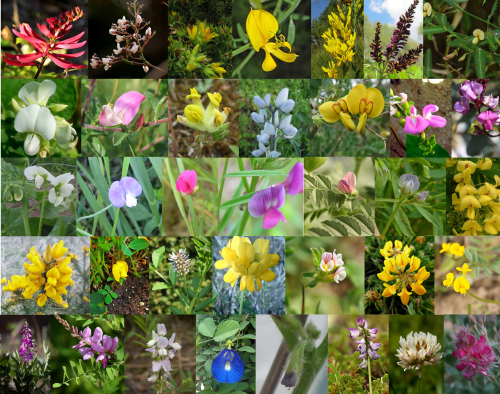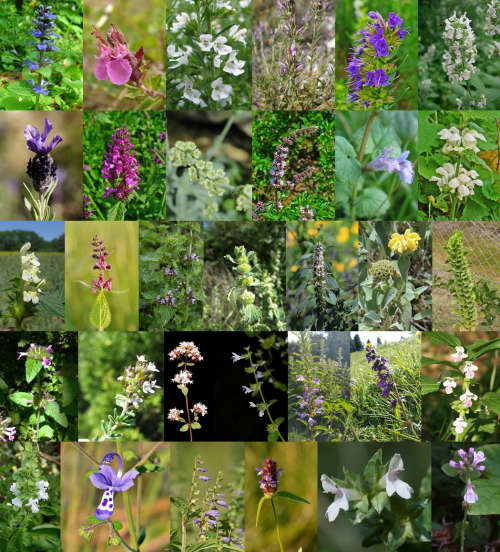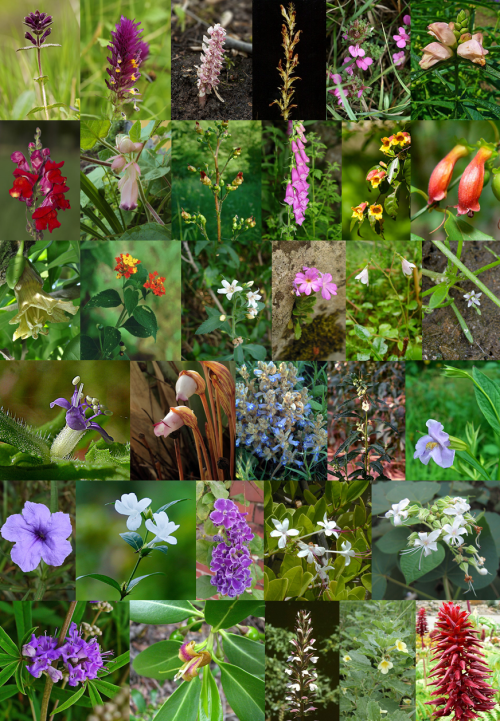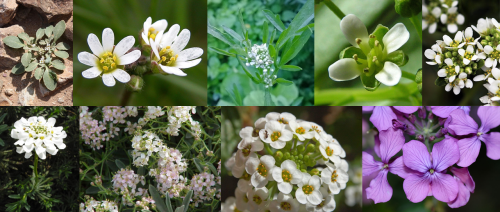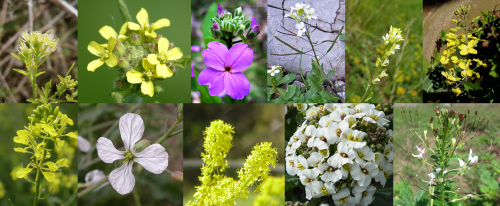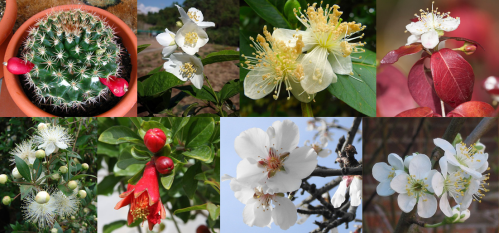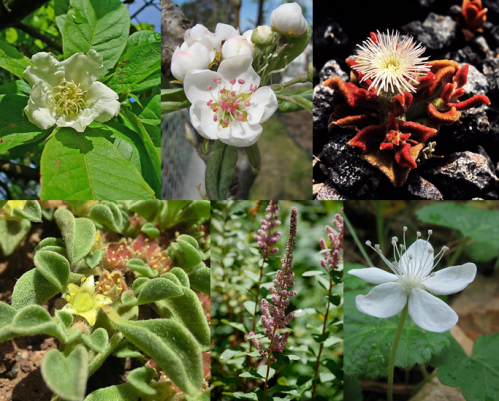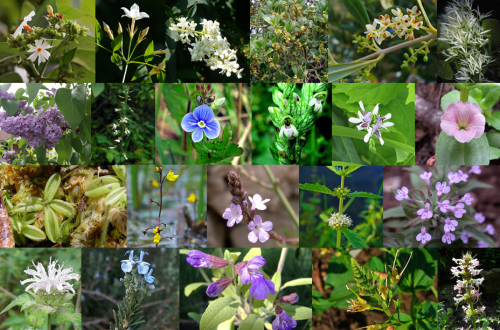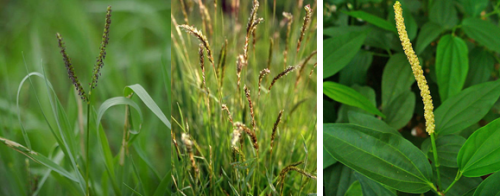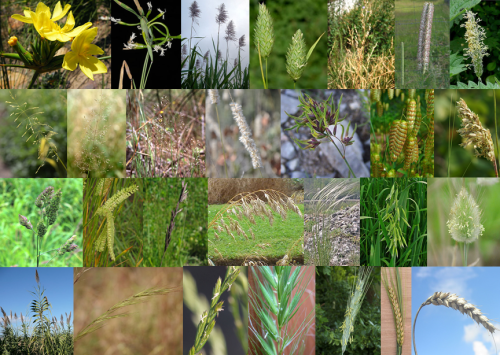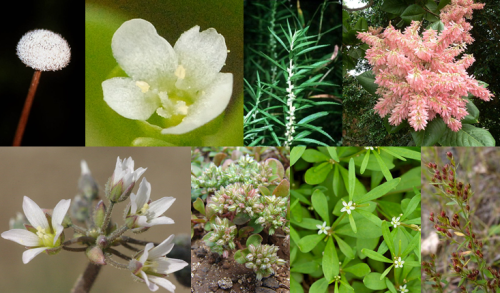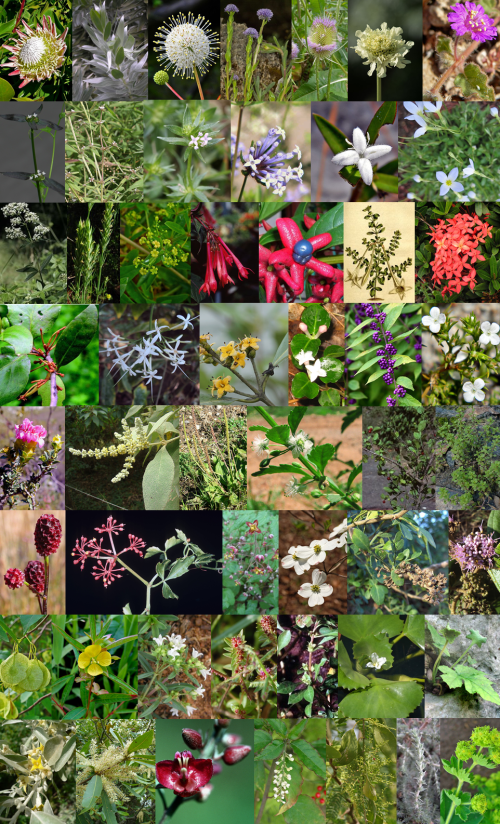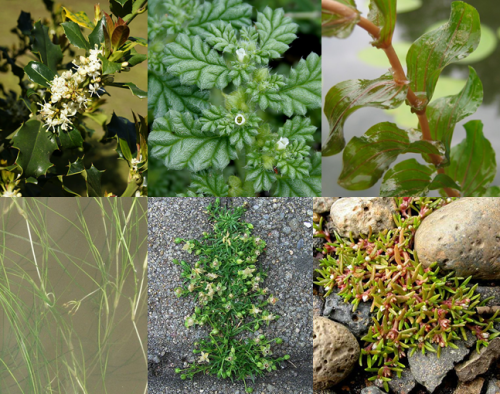by Piter Kehoma Boll
This posts continues to present the classification of plants according to Linnaeus that started in part 1. Se also parts 3, 4, 5, 6 and 7.
5. Pentandria (“five males”)
“Five husbands in each marriage”, i.e., five stamens in a hermaphrodite flower.
5.1 Pentandria monogynia (“five males and one female”), five stamens and one pistil in a hermaphrodite flower: Heliotropium (heliotropes), Myosotis (forget-me-nots), Lithospermum (gromwells), Anchusa (buglosses), Cynoglossum (houndstongues), Pulmonaria (lungworts), Symphytum (comfreys), Cerinthe (honeyworts), Borago (borages), Asperugo (madwort), Lycopsis (monksworts), Echium (viper’s bugloss), Varronia (varronia), Tournefortia (soldier’s bushes), Chiococca (cahincas), Diapensia (pincushions), Aretia (Alpine rock-jasmine), Androsace (rock-jasmines), Primula (primroses), Cortusa (Alpine bells), Soldanella (snowbells), Dodecatheon (shooting stars), Cyclamen (cyclamens), Menyanthes (bogbeans), Hottonia (water violets), Hydrophyllum (waterleaves), Lysimachia (loosestrifes), Anagallis (pimpernels), Theophrasta (theophrastas), Patagonula (patagonulas), Spigelia (pinkroots), Ophiorrhiza (snakeroots), Randia (indigoberries), Azalea (azaleas), Plumbago (leadworts), Phlox (phloxes), Convolvulus (bindweeds), Ipomoea (morning glories), Polemonium (Jacob’s ladders), Campanula (bellflowers), Roella (roellas), Phyteuma (rampions), Trachelium (throatworts), Samolus (brookweeds), Rondeletia (Panama roses), Portlandia (Jamaican bells), Bellonia (bellonias), Cinchona (quinines), Psychotria (wild coffees), Coffea (coffee), Lonicera (honeysuckles), Triosteum (horse-gentians), Erithalis (blacktorches), Morinda (morindas), Conocarpus (button trees), Mussaenda (mussaendas), Genipa (genipapo), Mirabilis (four o’clocks), Coris (bugflowers), Verbascum (mulleins), Datura (trumpets), Hyoscyamus (henbanes), Nicotiana (tobacco plants), Atropa (nightshades and mandrakes), Physalis (groundcherries), Solanum (nightshades, tomatoes, potato, aubergine), Capsicum (bell peppers, chili peppers), Strychnos (strychnine trees), Chironia (chironias), Cordia (manjacks), Brunfelsia (brunfelsias), Ehretia (ehretias), Cestrum (cestrums), Lycium (boxthorns), Chrysophyllum (goldleaves), Sideroxylon (bully trees), Rhamnus (buckthorns), Phylica (cape myrtles), Ceanothus (wild lilacs), Myrsine (African boxwood), Celastrus (staff vines), Euonymus (spindles), Hartogia (Cape buchu), Byttneria (byttnerias), Diosma (diosmas), Brunia (brunias), Itea (sweetspires), Galax (wandplant), Cedrela (new world cedars), Mangifera (magoes), Cupania (cupanias), Ribes (gooseberries and currants), Gronovia (gronovia), Hedera (ivies), Vitis (grape vines), Lagoecia (lagoecias), Sauvagesia (sauvagesias), Claytonia (miner’s lettuces), Achyranthes (chaff-flowers), Celosia (cockscombs), Illecebrum (coral necklace), Glaux (sea milkweed), Thesium (thesiums), Rauvolfia (devil-pepper), Cerbera (mango mangroves), Vinca (periwinkles), Nerium (oleanders), Plumeria (plumerias), Cameraria (camerarias), Tabernaemontana (milkwoods), Ceropegia (strings of hearts).

More than a hundred genera made up the order Pentandria Monogynia. Among the species there were (from left to right, top to bottom): European heliotrope (Heliotropium europaeum), true forget-me-not (Myosotis scorpioides), common gromwell (Lithospermum officinale), common bugloss (Anchusa officinalis), common houndstongue (Cynoglossum officinale), common lungwort (Pulmonaria officinalis), common comfrey (Symphytum officinale), common honeywort (Cerinthe major), common borage (Borago officinalis), madwort (Asperugo procumbens), red monkswort (Lycopsis vesicaria, now Nonea vesicaria), Italian viper’s bugloss (Echium italicum), cahinca (Chiococca alba), pincushion (Diapensia lapponica), northern rock-jasmine (Androsace septentrionalis), cowslip (Primula veris), Alpine bells (Cortusa matthioli or Primula matthioli), Alpine snowbell (Soldanella alpina), common shooting star (Dodecatheon meadia), European cyclamen (Cyclamen purpurascens), bogbean (Menyanthes trifoliata), water violet (Hottonia palustris), Virginia waterleaf (Hydrophyllum virginianum), yellow loosestrife (Lysimachia vulgaris), red pimpernel (Anagallis arvensis), American theophrasta (Theophrasta americana), white indigoberry (Randia aculeata), Japanese azalea (Azalea indica, now Rhododendron indicum), Ceylon leadwort (Plumbago zeylanica), garden phlox (Phlox paniculata), field bindweed (Convolvulus arvensis), cypress vine (Ipomoea quamoclit), common Jacob’s ladder (Polemonium caeruleum), giant bellflower (Campanula latifolia), round-headed rampion (Phyteuma orbiculare), blue throatwort (Trachelium caeruleum), seaside brookweed (Samolus valerandi), common Jamaican bell (Portlandia grandiflora), coffee (Coffea arabica), Italian honeysuckle (Lonicera caprifolium), common blacktorch (Erithalis fruticosa), great morinda (Morinda citrifolia), common button tree (Conocarpus erectus), wild mussaenda (Mussaenda frondosa), genipapo (Genipa americana), common four o’clock (Mirabilis jalapa), common mullein (Verbascum thapsus), common devil’s trumpet (Datura metel), black henbane (Hyoscyamus niger), common tobacco (Nicotiana tabacum), deadly nightshade (Atropa belladonna), common groundcherry (Physalis viscosa), potato (Solanum tuberosum), bell pepper (Capsicum annuum), nux vomica (Strynchos nux-vomica), Assyrian plum (Cordia myxa), American brunfelsia (Brunfelsia americana), night-blooming cestrum (Cestrum nocturnum), goji (Lycium barbarum), satinleaf (Chrysophyllum oliviforme), common buckthorn (Rhamnus cathartica), mountain sweet (Ceanothus americanus), African boxwood (Myrsine africana), American bittersweet (Celastrus scandens), European spindle (Euonymus europaeus), Virginia sweetspire (Itea virginica), Cuban cedar (Cedrela odorata), mango tree (Mangifera indica), red currant (Ribes rubrum), common ivy (Hedera helix), grape vine (Vitis vinifera), Siberian miner’s lettuce (Claytonia sibirica), common chaff-flower (Achyranthes aspera), common cockscomb (Celosia cristata), coral necklace (Illecebrum verticillatum), sea milkweed (Glaux maritima, now Lysimachia maritima), devil-pepper (Rauvolfia tetraphylla), sea mango (Cerbera manghas), lesser periwinkle (Vinca minor), oleander (Nerium oleander), red plumeria (Plumeria rubra), broad-leaf cameraria (Cameraria latifolia), string of hearts (Ceropegia candelabrum). Credits to Ivar Leidus (forget-me-not), Hans Hillewaert (gromwell, honeywort), Andreas Eichler (bugloss, comfrey), H. Zell (borage, cowslip, coffee, tobacco, potato, mountain sweet, spindle), Hermann Schachner (madwort), Scott Zona (cahinca, cameraria), Opioła Jerzy (Alpine bells), Agnes Monkelbaan (cyclamen), J.-H. Janßen (water violet), Frank Vicentz (loosestrife, cockscomb), Reuven Karp (pimpernel), Smithsonian Institute (theophrasta), Bob Peterson (indigoberry), J. M. Garg (leadwort), Anneli Salo (bindweed), Hafiz Issadeen (cypress vine), Erlend Bjørtvedt (bellflower), Javier Martin (throatwort), Raffi Kojian (Jamaican bell), Stefan Lefnaer (honeysuckle), Callie Oldfield (blacktorch), Ulf Mehlig (button tree), João Medeiros (genipapo), Zoya Akulova (groundcherry), Marco Schmidt (Assyrian plum), Andel Früh (brunfelsia), Cary Bass (cestrum), Danny S. (goji), Homer Edward Price (satinleaf), Krzysztof Ziarnek (buckthorn), Carla Antonini (mango), Stefan Kampf (currant), Isidre Blanc (ivy), Wouter Hagens (grape vine), Walter Siegmund (miner’s lettuce), Jeevan Jose (chaff-flower), Christian Fischer (sea milkweed), Christer Johansson (periwinkle), Ian W. Fieggen (oleander), Indian Biodiversity Portal (string of hearts), and Wikimedia users Aroche (heliotrope, brookweed), Fornax (houndstongue, rock jasmine), Belladona2 (lungwort), Cerencin (viper’s bugloss), Alinja (pincushion), Cptcv (snowbell), Uoaei1 (bogbean), Jnn (azalea), Epibase (phlox), Tigerente (rampion), The Photographer (morinda), Vinayaraj (mussaenda, nux vomica, devil pepper), Wildfeuer (four o’clock), 428mdk09 (mullein), Better days came (trumpet), Imanrtin6 (henbane), Aktron (nightshade), Carstor (bell pepper), JMK (African boxwood), SB_Johnny (sweetspire), Weddi (coral necklace), BotBln (sea mango), and KayEss (plumeria).
5.2 Pentandria digynia (“five males and two females”), five stamens and two pistils in a hermaphrodite flower: Periploca (silkvines), Cynanchum (dog-strangling vines), Apocynum (dogbanes), Asclepias (milkweeds), Stapelia (carrion flowers), Herniaria (rupturewort), Chenopodium (goosefoots), Beta (beets), Salsola (saltworts), Anabasis (anabases), Cressa (alkaliweeds), Trianthema (pigweeds), Gomphrena (bachelor buttons), Bosea (yervamora), Ulmus (elms), Nama (fiddleleaves), Heuchera (alumroots), Swertia (felworts), Gentiana (gentians), Phyllis (phyllis), Eryngium (sea hollies), Hydrocotyle (water pennyworts), Sanicula (sanicles), Astrantia (masterworts), Bupleurum (hare’s ears), Echinophora (thorn-bearers), Tordylium (hartworts), Caucalis (bur-parsley), Artedia (artedia), Daucus (carrots), Ammi (false bishop’s weeds), Bunium (black cumin), Conium (hemlocks), Selinum (milk parsleys), Athamanta (athamantas), Peucedanum (hog’s fennels), Crithmum (sea fennels), Cachrys (cachrys), Hasselquistia (Egyptian hartwort), Ferula (giant fennels and asafoetidas), Laserpitium (sermountains), Heracleum (hogweeds), Ligusticum (lovages), Angelica (angelicas), Sium (water-parsnips), Sison (stone-parsnips), Bubon (mountain-parsnips), Cuminum (cumin), Oenanthe (water dropworts), Phellandrium (water dropworts and lovages), Cicuta (water hemlocks), Aethusa (fool’s parsley), Coriandrum (corianders), Sandix (cicelies and shepherd’s-needles), Chaerophyllum (chervils), Imperatoria (true masterwort), Seseli (moon carrots and fennels), Thapsia (deadly carrots), Pastinaca (parsnips), Smyrnium (alexanders), Anethum (dill), Carum (caraway), Pimpinella (anis), Apium (celery and parsley), Aegopodium (ground elders).

The order Pentandria Digynia included the following species (from left to right, top to bottom): common silkvine (Periploca graeca), acute dog-strangling vine (Cynanchum acutum), fly-trap dogbane (Apocynum androsaemifolium), white milkweed (Asclepias variegata), starfish flower (Stapelia hirsuta), smooth rupturewort (Herniaria glabra), white goosefoot (Chenopodium album), beet (Beta vulgaris), common saltwort (Salsola soda), common alkaliweed (Cressa cretica), black pigweed (Trianthema portulacastrum), bachelor button (Gomphrena globosa), American elm (Ulmus americana), American alumroot (Heuchera americana), common felwort (Swertia perennis), great yellow gentian (Gentiana lutea), culantro (Eryngium foetidum), marsh pennywort (Hydrocotyle vulgaris), common sanicle (Sanicula europaea), great masterwort (Astrantia major), sickle-leaved hare’s ear (Bupleurum falcatum), Mediterranean hartwort (Tordylium apulum), bur-parsley (Caucalis platycarpos), artedia (Artedia squamata), carrot (Daucus carota), false bishop’s weed (Ammi majus), black cumin (Bunium bulbocastanum), poison hemlock (Conium maculatum), hog’s fennel (Peucedanum officinale), sea fennel (Crithmum maritimum), giant fennel (Ferula communis), broad-leaved sermountain (Laserpitium latifolium), common hogweed (Heracleum sphondylium), Scots lovage (Ligusticum scoticum), garden angelica (Angelica archangelica), great water-parsnip (Sium latifolium), cumin (Cuminum cyminum), tubular water dropwort (Oenanthe fistulosa), cowbane (Cicuta virosa), fool’s parsley (Aethusa cynapium), coriander (Coriandrum sativum), shepherd’s-needle (Scandix pecten-veneris), bulbous-chervil (Chaerophyllum bulbosum), true masterwort (Imperatoria ostruthium or Peucedanum ostruthium), fennel (Seseli foeniculum, now Foeniculum vulgare), villous deadly carrot (Thapsia villosa), parsnip (Pastinaca sativa), alexander (Smyrnium olusatrum), dill (Anethum graveolens), caraway (Carum carvi), anis (Pimpinella anisum), celery (Apium graveolens), ground elder (Aegopodium podagraria). Credits to Isidre Blanc (dog-strangling vine), Stan Shebs (dogbane), Eurico Zimbres (starfish flower), Kristian Peters (rupturewort), Luigi Rignanese (saltwort), Michael J. Plagens (pigweed), Melissa McMasters (elm), Derek Ramsey (alumroot), Bernd Haynold (felwort), H. Zell (masterwort, hemlock, hogweed, cowbane, fool’s parsley, fennel, celery), Donald Hobern (hartwort), Stefan Lefnaer (bur-parsley), Daniel Villafruela (false bishop’s weed), Radio Tonreg (hog’s fennel), Jean Tosti (giant fennel), Meneerke Bloem (sermountain, true masterwort), Christian Fischer (angelica, water dropwort), Jeremy Halls (water-parsnip), G. Hagedorn (shepherd’s-needle), Franz Xaver (chervil, ground elder), Magnus Manske (parsnip), Tato Grasso (alexander), Matt Lavin (dill), Rolf Engstrand (caraway), Raffi Kojian (anis), Wikimedia users Lucarelli (silkvine), Rasbak (beet), Vinayaraj (bachelor button), Philipendula (gentian), Mokkie (culantro), Alians PL (pennywort), Fornax (hare’s ear), Ixitixel (carrot), Aroche (sea fennel), Stemonitis (lovage), Rlevse (coriander), and flickr users Gaspa (black cumin) and alliumherbal (cumin).
5.3 Pentandria Trigynia (“five males and three females”), five stamens and three pistils in a hermaphrodite flower: Rhus (sumacs), Viburnum (viburnums), Cassine (false olives), Sambucus (elders), Staphylea (bladdernuts), Tamarix (tamarisks), Turnera (turneras), Telephium (telephiums), Corrigiola (strapwort), Pharnaceum (carpetweeds), Alsine (chickweeds), Basella (Indian spinachs), Sarothra (orangegrass).

The 12 species in this image were in the order Pentandria Trigynia (from left to right, top to bottom): ladder’s sumac (Rhus coriaria), wayfarer (Viburnum lantana), Cape saffron (Cassine peragua), European black elder (Sambucus nigra), European bladdernut (Staphylea pinnata), French tamarisk (Tamarix gallica), yellow alder (Turnera ulmifolia), common telephium (Telephium imperati), strapwort (Corrigiola litoralis), chickweed (Alsine media, now Stellaria media), Malabar spinach (Basella alba), orangegrass (Sarothra gentianoides, now Hypericum gentianoides). Credits to Isidre Blanc (wayfarer), Sten Porse (bladdernut), Michael Wolf (yellow alder), Gideon Pisanti (telephium), Bob Peterson (orangegrass), and Wikimedia users Aroche (strapwort) and Shizhao (Malabar spinach).
5.4 Pentandria Tetragynia (“five males and four females”), five stamens and four pistils in a hermaphrodite flower: Parnassia (grass of Parnassus).
5.5 Pentandria Pentagynia (“five males and five females”), five stamens and five pistils in a hermaphrodite flower: Aralia (spikenards), Barreria (a species of unresolved identity), Statice (statices), Linum (flaxes), Aldrovanda (waterwheels), Drosera (sundews), Crassula (crassulas), Suriana (bay cedar), Sibbaldia (sibbaldia).
5.6 Pentandria Polygynia (“five males and many females”), five stamens and many pistils in a hermaphrodite flower: Myosurus (mousetails).
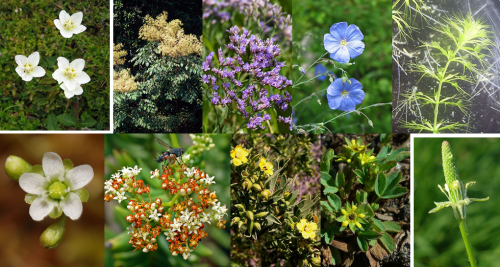
(From left to right, top to bottom) A single species, the grass-of-Parnassus (Parnassia palustris) made up the order Pentandria Tetragynia. The following eight species were in the order Pentandria Pentagynia: devil’s walkingstick (Aralia spinosa), common statice (Statice limonium, now Limonium vulgare), common flax (Linum usitatissimum), waterwheel (Aldrovanda vesiculosa), common sundew (Drosera rotundifolia), pine crassula (Crassula tetragona), bay cedar (Suriana maritima), creeping sibbaldia (Sibbaldia procumbens). The last species, the mousetail (Myosurus minimus), was the only one in the order Pentandria Polygynia. Credits to James H. Miller & Ted Bodner (devil’s walkingstick), Olivier Pichard (statice), Denis Barthel (waterwheel), Michal Rubeš (sundew), André Karwath (crassula), B. Navez (bay cedar), Wikimedia users Tigerente (grass-of-Parnassus), 4d44 (flax) and Fornax (mousetail), and flickr user pellaea (sibbaldia).
6. Hexandria (“six males”)
“Six husbands in each marriage”, i.e., six stamens in a hermaphrodite flower.
6.1 Hexandria Monogynia (“six males and one female”), six stamens and one pistil in a hermaphrodite flower: Bromelia (large spiny bromeliads), Tillandsia (airplants), Renealmia (airplant mosses), Burmannia (bluethreads), Tradescantia (spiderworts), Pontederia (pickerel weeds), Galanthus (snowdrops), Leucojum (snowbells), Narcissus (daffodils), Pancratium (rain flowers), Crinum (swamplilies), Amaryllis (amaryllis and rain lilies), Bulbocodium (meadow-saffrons), Aphyllanthes (straw lily), Allium (garlics, leeks, onions, chives), Lilium (true lilies), Fritillaria (fritillaries), Uvularia (bellworts), Gloriosa (glory lily), Erythronium (dog’s-tooth-violet), Tulipa (tulips), Ornithogalum (stars-of-Bethlehem), Scilla (squills), Asphodelus (asphodels), Anthericum (St. Bernard’s-lilies), Leontice (lion flowers), Asparagus (asparaguses), Convallaria (lily-of-the-valley, solomon’s-seals), Polianthes (tuberose), Hyacinthus (hyacinths and bluebells), Cyanella (little blues), Aletris (colicroots), Yucca (yuccas), Aloe (aloes), Agave (agaves), Hemerocallis (daylilies), Hypoxis (stargrasses), Acorus (sweetflags), Orontium (golden club), Haemanthus (blood lilies), Calaus (rotang), Juncus (rushes), Hippocratea (hippocratea), Richardia (pusleys), Achras (sapodilla), Prinos (winterberries), Berberis (barberries), Loranthus (mistletoes), Frankenia (seaheaths), Peplis (water-purslane).
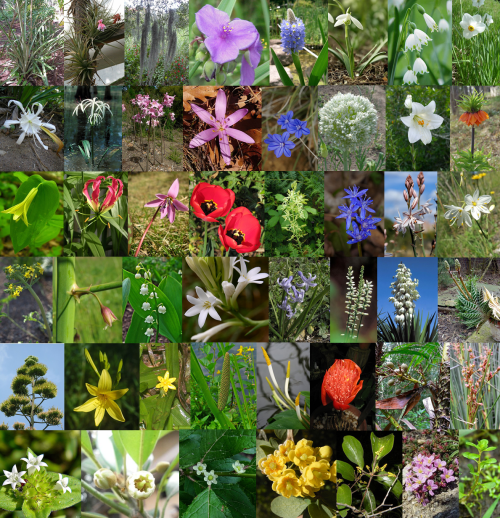
The order Hexandria Monogynia included (from left to right, top to bottom): karatas bromeliad (Bromelia karatas), narrowleaf airplant (Tillandsia tenuifolia), Spannish moss (Renealmia usneoides, now Tillandsia usneoides), Virginia spiderwort (Tradescantia virginiana), common pickerel weed (Pontederia cordata), common snowdrop (Galanthus nivalis), summer snowbell (Leucojum aestivum), poet’s daffodil (Narcissus poeticus), Ceylon’s rain flower (Pancratium zeylanicum), American swamplily (Crinum americanum), belladonna-lily (Amaryllis belladonna), spring meadow saffron (Bulbocodium vernum, now Colchicum bulbocodium), straw lily (Aphyllanthes monspeliensis), garlic (Allium sativum), Madonna lily (Lilium candidum), imperial fritillary (Fritillaria imperialis ), perfoliate bellwort (Uvularia perfoliata), glory lily (Gloriosa superba), dog’s-tooth-violet (Erythronium dens-canis), garden tulip (Tulipa gesneriana), Prussian asparagus (Ornithogalum pyrenaicum), Alpine squill (Scilla bifolia), onion-leaved asphodel (Asphodelus fistulosus), branched St. Bernard’s-lily (Anthericum ramosum), common lion flower (Leontice leontopelatum), garden asparagus (Asparagus officinalis), lily-of-the-valley (Convallaria majalis), tuberose (Polianthes tuberosa), common hyacinth (Hyacinthus orientalis), common colicroot (Aletris farinosa), aloe yucca (Yucca aloifolia), tiger aloe (Aloe variegata), centuryplant (Agave americana), lemon lily (Hemerocallis lilioasphodelus), South American stargrass (Hypoxis decumbens), sweetflag (Acorus calamus), golden club (Orontium aquaticum), blood lily (Haemanthus coccineus), rotang (Calamus rotang), sharp rush (Juncus acutus), Florida pusley (Richardia scabra), sapodilla (Achras zapota, now Manilkara zapota), common winterberry (Prinos verticillatus, now Ilex verticillata), common barberry (Berberis vulgaris), western mistletoe (Loranthus occidentalis, now Oryctanthus occidentalis), common seaheath (Frankenia laevis), water purslane (Peplis portula, now Lythrum portula). Credits to Kurt Stüber (karatas, spiderwort, snowbell), Michael Wolf (airplant), Christian Hummert (daffodil), Muhammad Mahdi Karim (rain flower), Gerald J. Lenhard (swamplily), Stan Shebs (belladonna-lily), Muriel Bendel (meadow saffron), Hans Hillewaert (straw lily, asphodel), Jason Hollinger (bellwort), Jean-Jacques Milan (glory lily), Accord H. Brisse (dog’s-tooth-violet, seaheath), Andreas Eichler (squill), Albert Häglsperger (St. Bernard’s lily), Kristian Peters (asparagus), H. Zell (lily of the valley, sweetflag), Jayesh Patil (tuberose), Stanislav Doronenko (lemon lily), Bernard Dupont (rotang), Krzysztof Ziarnek (rush), Bob Peterson (pusley), Fritz Flohr Reynolds (winterberry), Teun Spaans (barberry), Reinaldo Aguilar (mistletoe), Olivier Pichard (water-purslane) and Wikimedia users KENPEI (pickerel weed, centuryplant, blood lily), Caroig (snowdrop), AfroBrazilian (garlic), Gidip (Madonna lily), Fizykaa (tulip), Patrice78500 (Prussian asparagus), Averater (lion flower), Eitan f (hyacinth), 1978 (stargrass), Aruna (sapodilla).
6.2 Hexandria Digynia (“sex males and two females”), six stamens and two pistils in a hermaphrodite flower: Velezia (velezia), Oryza (rice), Atraphaxis (atraphaxis).
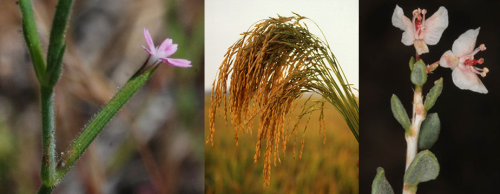
The small order Hexandria Digynia contained this three species (from left to right): velezia (Velezia rigida), rice (Oryza sativa), spiny atraphaxis (Atraphaxis spinosa). Credits to Barry Breckling (velezia) and Ori Fragman-Sapir (atraphaxis).
6.3 Hexandria Trigynia (“six males and three females”), six stamens and three pistils in a hermaphrodite flower: Flagellaria (whip vine), Rumex (docks and sorrels), Scheuchzeria (podgrass), Triglochin (arrowgrasses), Melanthium (bunchflowers), Medeola (Indian cucumber and some asparagus), Trillium (trilliums), Menispermum (moonseeds), Saururus (lizard’s tail), Colchicum (meadow saffrons), Helonias (swamp pink).

These 11 species (from left to right, top to bottom) were in the order Hexandria Trigynia: whip vine (Flagellaria indica), patience dock (Rumex patientia), podgrass (Scheuchzeria palustris), marsh arrowgrass (Triglochin palustris), Virginia buchflower (Melanthium virginicum), Indian cucumber (Medeola virginiana), nodding trillium (Trillium cernuum), Canadian moonseed (Menispermum canadense), American lizard’s tail (Saururus cernuus), common meadow-saffron (Colchicum autumnale), swamp pink (Helonias bullata). Credits to Raffi Kojian (whip vine), Emőke Dénes (dock), Kristian Peters (arrowgrass), Fritz Flohr Reynolds (lizard’s tail), H. Zell (swamp pink), and Wikimedia users Bertblok (podgrass), Uleli (bunchflower), Jomegat (Indian cucumber), Fungus Guy (trillium), Nadiatalent (moonseed), Cquoi (meadow-saffron).
6.4 Hexandria Tetragynia (“six males and four females”), six stamens and four pistils in a hermaphrodite flower: Petiveria (guinea henweed).
6.5 Hexandria Polygynia (“six males and many females”), six stamens and many pistils in a hermaphrodite flower: Alisma (water-plantains).
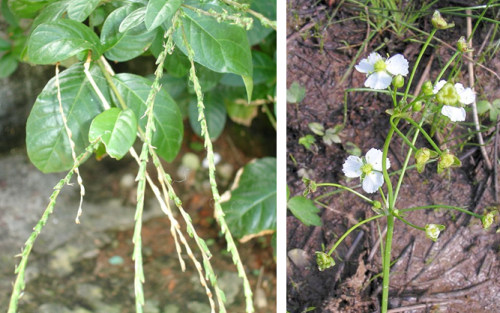
The guinea henweed (Petiveria alliacea, left) was the single species in the order Hexandria Tetragynia, and the common water-plantain (Alisma plantago-aquatica, right) was one of the few species in the order Hexandria Polygynia, Credits to Wikimedia users Toluaye (guinea henweed) and Bff (water-plantain).
Several plants that are indeed genetically related, such as those that would later be called “Umbelliferae” and “Liliaceae”, appear in the same orders already in Linnaeus’ System, but there are yet many bizarre discrepancies. For example, how could he classify the rice so distant from other cereals and grasses?
– – –
References:
Linnaeus, C. (1758) Systema Naturae per regna tria Naturae…
– – –

All images are licensed under a Creative Commons Attribution-ShareAlike 4.0 International License.
